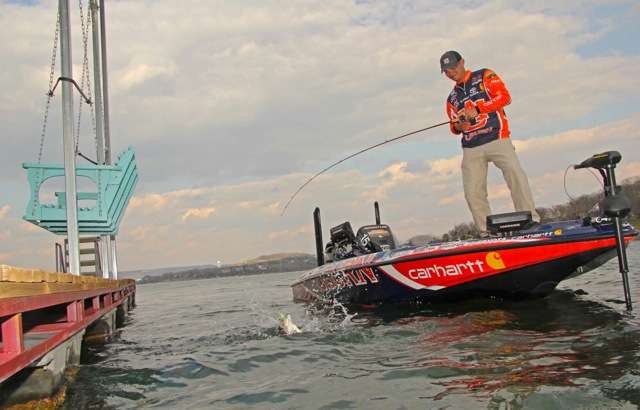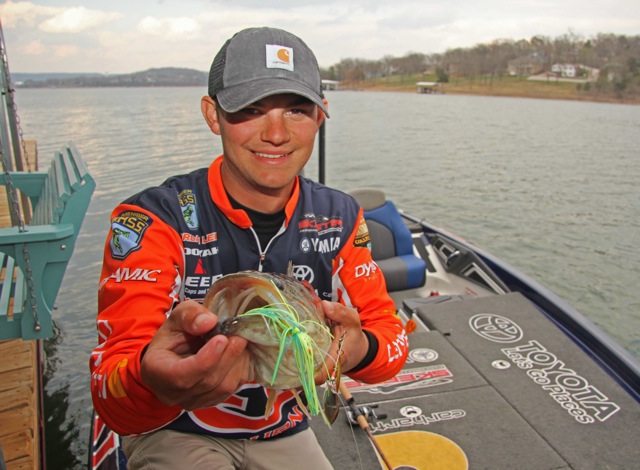
I realize that May means the heart of baseball season and an end to the school year for most people, but for me, May means the shad are spawning.
Hey look; I never said my thoughts were wired like those of most “normal” people. That’s why my brother Matt says I might forget to tie my shoes, but only because I’m too busy thinking of how to catch the next bass.
And catching bass in May, throughout much of the southern U.S., is centered on spawning shad. In just about every state east of the Rockies, shad are to bass what cheeseburgers from the dollar menu are to college kids – they’re readily available and serve as a decent source of nutrition.
I realize, based on climate differences and water temps, that shad don’t spawn in the Ohio River for example at the same time they do in my home state of Alabama. But no matter the date on the calendar, whether it’s early May or late May, the concentration of shad near shallow vegetation, riprap banks, and floating boat docks when they’re spawning creates an easy opportunity for largemouth to chow down.
And you’d better get on the water early.
Early … as in launch your boat way before sunrise. The eggs and milt are released by a mixed school of males and female shad as they swim together near shallow objects during the lowest light of the morning. The eggs then stick to vegetation, shallow rocks and floating docks, and the bass show up to eat the adult shad while all this activity is taking place. If you get there at 9 a.m. on a sunny day, you’ll probably miss out on all the activity. Predawn and sunrise is when the action is at its best.
 In fact, Matt and I just got done competing on the Red River near Shreveport, La., and as tough as it was to get a bite, I was able to catch two keepers on back-to-back casts the very first thing in the morning by casting around spawning shad. Truly, man, when this bite is on, it’s a flurry – you can catch five keepers in five casts on this pattern – but it ends quickly as the sun gets higher in the sky.
In fact, Matt and I just got done competing on the Red River near Shreveport, La., and as tough as it was to get a bite, I was able to catch two keepers on back-to-back casts the very first thing in the morning by casting around spawning shad. Truly, man, when this bite is on, it’s a flurry – you can catch five keepers in five casts on this pattern – but it ends quickly as the sun gets higher in the sky.
Hands down, my favorite lure for fishing around the shad spawn is a 3/8-ounce Booyah spinnerbait with double willowleaf blades. Very few lures imitate a shad better than a spinnerbait. In fact, that spawning shad will actually follow your spinnerbait and bump into it as you retrieve it. When you see shad following and bumping your spinnerbait – you can be pretty certain that their spawn is at its peak.
Keep it simple and choose a spinnerbait with shades of white and chartreuse in the skirt. And as far as line, I use 20-pound line, because in addition to casting around abrasive metal dock frames and cables, a lot of times shad will spawn on the gnarly riprap rocks around bridges; so you want the heaviest line you can get away with, and 20-pound is about perfect.
I also want to stress the importance of making accurate casts. The closer you can cast to your target the better. It’s also crucial that you retrieve your spinnerbait tight and parallel to the dock floats or riprap. The more accurate you are, the more bites you’re likely to get. Parallel casts and retrieves, versus perpendicular, are critical.
So go early. Real early. Keep lure selection simple. And when you see the shad “flicking” near the riprap, floating docks or a shallow line of vegetation – get ready – because May for me is all about the shad spawn. And that leads to bass lining up to eat just like me and my buddies at a late night drive-thru.





